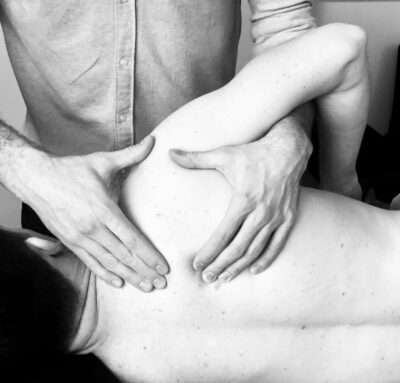Helmet pain and osteopathy
In our pursuit of safety during various activities, helmets play a pivotal role. However, beyond protection, the right helmet can also prevent discomfort and pain. In this introduction, we’ll explore the importance of choosing a high-quality helmet to ensure a pain-free experience. Let’s discover what makes a good helmet and how it can enhance our safety and comfort in our endeavors.
The different types of neck pain and who to consult
Mechanical neck pain
Comes on at the end of the day
Slight loosening in the morning
Present for certain movements and physical activities
An osteopath must be consulted
Inflammatory neck pain
Happens when at rest
Pain is present independent of area being used
Causes the patient to wake up in the night
A doctor must be consulted
After a road accident
Recurring headaches
Stress and depression
Persistent pain
A doctor and an osteopath must be consulted
Criteria for good helmet selection
- It should not hurt
- It should not compress the forehead
- The upper opening should be above the eyebrows
- It should secure the face, including the cheeks
- Hold the helmet tightly in your hands and try to move your head, it shouldn’t move more than a couple of millimeters
- You shouldn’t be able to fit your finger between your forehead and the helmet padding

How to decrease pain on your own ?
Warm-up
Repeat each of these movements ten times in order to warm-up well:

Stretching
Find this stretch and many others in a previously published article: Stretches and osteopathy
Strengthen
On your back:
Place your feet on the floor and lift your head. You will find yourself in a crunch position. Keep this position and nod your head YES and NO. Repeat at least ten times each.
On your side:
Lie comfortably on a side. Square your shoulders to lift the head off the ground. Roll your head left to right. Repeat the movement a dozen times and then roll onto your other side and repeat.
Seeking an osteopath can be advantageous for several reasons:
- Structural Assessment: Osteopaths are skilled at assessing the structural alignment of the body. Wearing a helmet, especially for activities like cycling or motorcycling, can sometimes lead to postural imbalances or misalignments in the neck and spine. An osteopath can identify these issues and provide targeted treatment to restore proper alignment.
- Muscle Tension Relief: Wearing a helmet for extended periods can cause muscle tension and stiffness in the neck and shoulder area. Osteopathic techniques such as soft tissue manipulation, massage, and stretching can help alleviate muscle tension and promote relaxation in the affected areas.
- Joint Mobilization: Prolonged helmet use may contribute to restricted movement in the neck joints. Osteopathic manipulation techniques, including joint mobilization and manipulation, can help restore normal joint mobility and range of motion, reducing pain and stiffness.
- Nerve Impingement Relief: Improper helmet fit or prolonged pressure on the neck can sometimes lead to nerve impingement, causing symptoms such as pain, tingling, or numbness. Osteopathic techniques aim to release tension and pressure on the nerves, providing relief from these symptoms.
- Preventive Care: Regular visits to an osteopath can help prevent neck pain and discomfort associated with helmet use by addressing any underlying issues early on. Osteopaths can provide advice on proper helmet fit, posture, and ergonomics to minimize the risk of neck strain and injury.
- Holistic Approach: Osteopathy takes a holistic approach to healthcare, considering the interconnectedness of the body systems. In addition to addressing neck pain, an osteopath may assess other factors contributing to your symptoms, such as posture, lifestyle habits, and overall health, to provide comprehensive care.
Overall, consulting with an osteopath for neck pain related to helmet use can help address both the immediate symptoms and underlying causes, promoting optimal neck health and well-being. It’s essential to consult with a healthcare professional to determine the most appropriate treatment plan for your specific needs.







